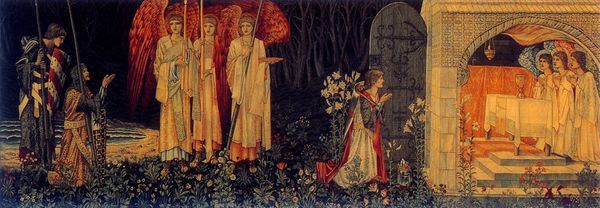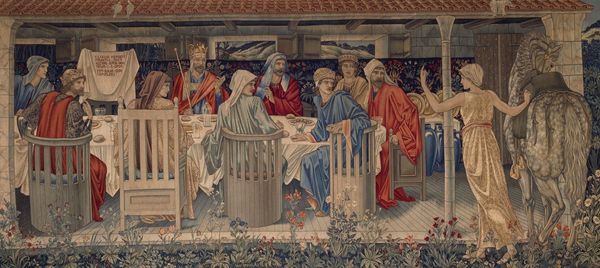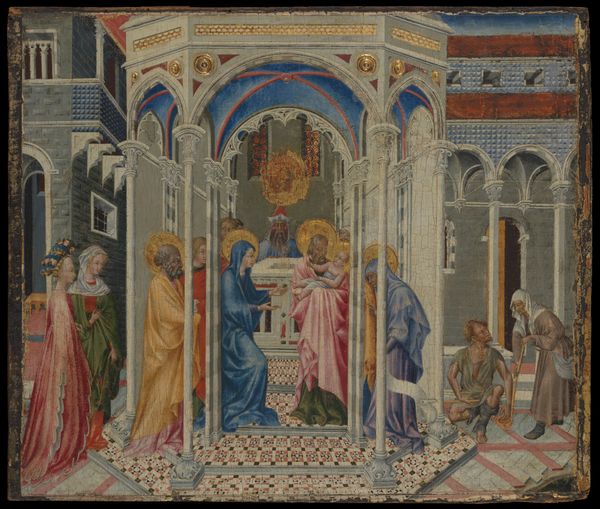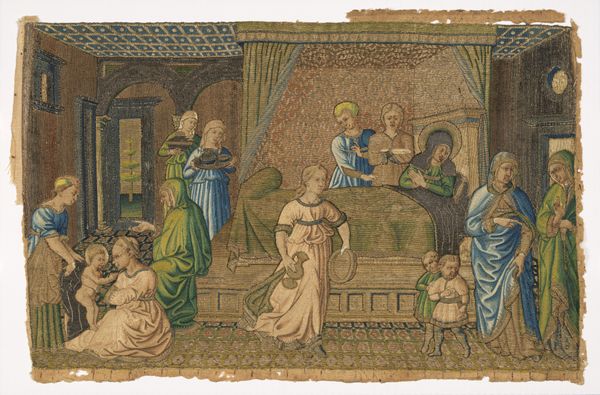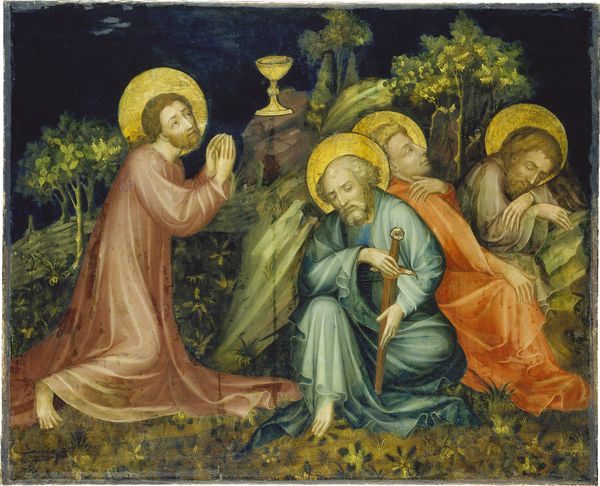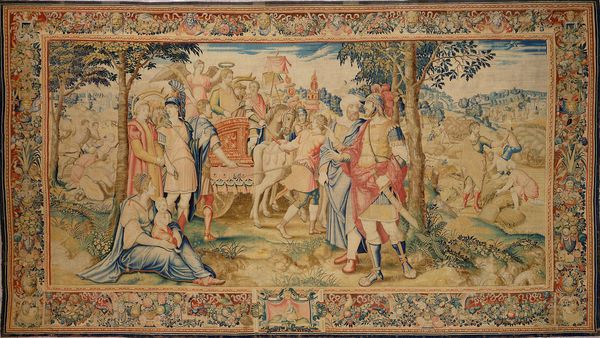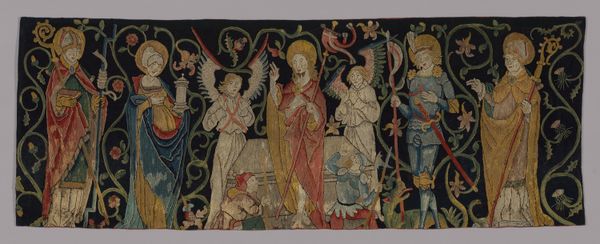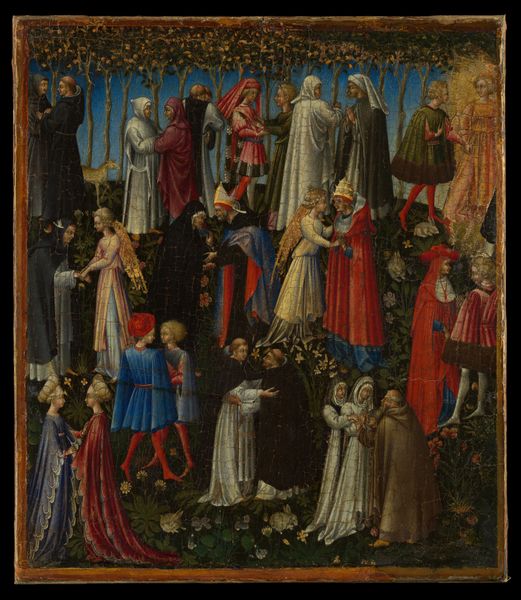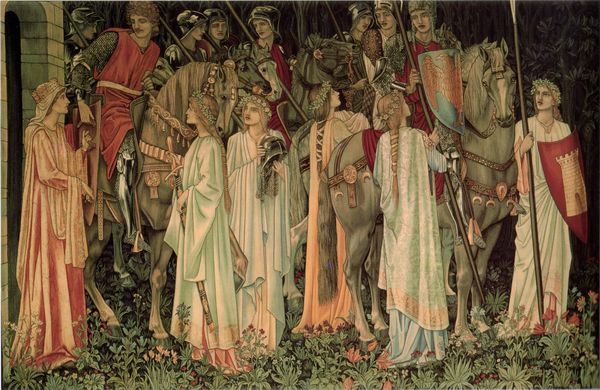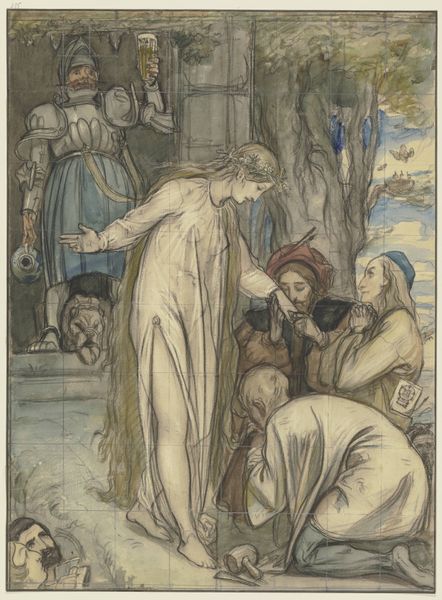
weaving, textile
#
narrative-art
#
arts-&-crafts-movement
#
weaving
#
stain glass
#
textile
#
figuration
#
mural art
#
naive art
#
history-painting
Copyright: Public domain
Editor: This is *The Adoration of the Magi*, a textile from 1890, designed by William Morris, now hanging at the Musée d'Orsay. I'm immediately struck by the texture, it’s so detailed! What can you tell me about it? Curator: Note how the weaving process elevates this biblical scene beyond mere decoration. We must consider the labor invested—the hours of skilled craftsmanship required to render this complex design in textile. This connects it to a broader critique of industrial production prevalent in the Arts and Crafts Movement. Editor: So you’re saying the choice of textile, rather than, say, painting, is significant? Curator: Absolutely. Think about the context. Morris championed the revival of traditional crafts against what he saw as the dehumanizing effects of mass production. This tapestry isn't just an image, it is a material assertion of value, prioritizing skilled labor and hand-made quality. Consider the availability of materials, their cost, and how this tapestry would have been consumed at the time. It's all interconnected. Does understanding the context of its production shift your view of the work? Editor: Definitely. I was focused on the Pre-Raphaelite aesthetic, but the conscious decision to create this scene in tapestry gives it a whole new layer of meaning! Curator: Precisely. It reminds us that art isn't created in a vacuum. Examining the materials and the means of production gives us vital clues to its deeper social and cultural significance. Editor: It’s like the labor itself becomes part of the narrative. That's a fascinating way to look at it. Thanks!
Comments
No comments
Be the first to comment and join the conversation on the ultimate creative platform.
